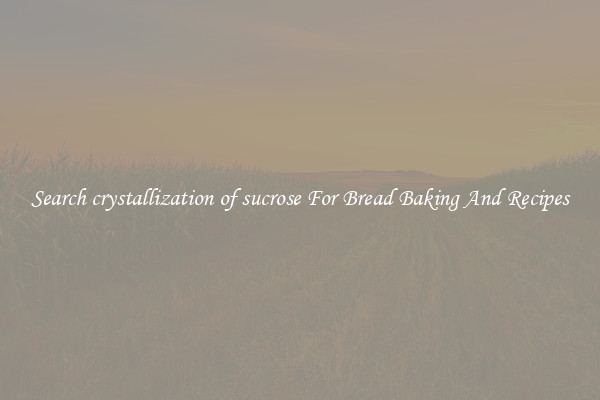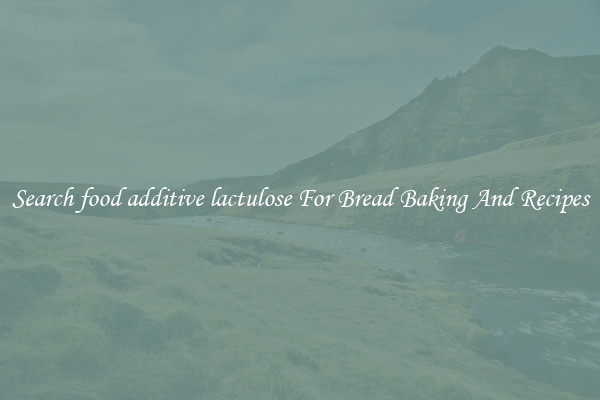Search crystallization of sucrose For Bread Baking And Recipes
Search Crystallization of Sucrose for Bread Baking and Recipes

Sucrose, commonly known as table sugar, plays a significant role in bread baking and various recipes. It not only adds sweetness to our culinary creations but also contributes to the texture, color, and overall appeal of baked goods. However, there is one aspect of sugar that can greatly affect the outcome of our recipes – crystallization.
Crystallization occurs when sugar molecules form crystals in a concentrated syrup, resulting in a grainy texture. In bread baking, this phenomenon can lead to a less desirable crumb and a lackluster loaf. Understanding the reasons behind crystallization and how to prevent it can significantly improve the quality of our baked goods.
One of the primary causes of crystallization is undissolved sugar. It's crucial to ensure that sugar is thoroughly dissolved in a recipe, especially when using a wet method. Adding sugar to warm water or other liquid ingredients and stirring until fully dissolved can prevent the formation of crystals during the baking process.
Temperature control is another vital factor in avoiding sugar crystallization. As the temperature drops, sugar molecules are more likely to bond together and form crystals. To prevent this from happening, it is essential to follow recipe instructions and maintain the correct temperatures specified. For instance, when making caramel or sugar syrups, brushing down the sides of the pan with a wet brush can help prevent sugar crystals from forming.
Adding certain ingredients can also assist in inhibiting the crystallization process. Ingredients like acid or cream of tartar work as interfering agents by interrupting the formation of sugar crystals. For instance, adding a small amount of lemon juice or cream of tartar to a sugar syrup can effectively prevent crystallization.
In bread baking, the choice of sugar used can influence the likelihood of crystallization. Refined white sugar is less prone to crystallization compared to raw or unrefined sugars due to its higher purity. Using granulated white sugar or caster sugar in bread recipes can ensure a smoother texture and finer crumb.
Sucrose crystallization can also have some advantages in certain recipes. For example, in the production of confectionery or sugary coatings, controlled crystallization is essential to obtain specific textures, such as the crunchy crust on top of a crème brûlée or the soft interior of a chocolate truffle. In these cases, proper guidance and the right techniques can help achieve the desired outcome.
In conclusion, search crystallization of sucrose plays a vital role in the success of bread baking and various recipes. Understanding the causes and prevention methods is crucial to avoid grainy textures and achieve the desired results. Techniques such as proper dissolution, temperature control, and the use of interfering agents can greatly aid in preventing sucrose crystallization. By mastering these techniques, we can enhance the quality of our baked goods and culinary creations.

View details

View details

View details

View details






